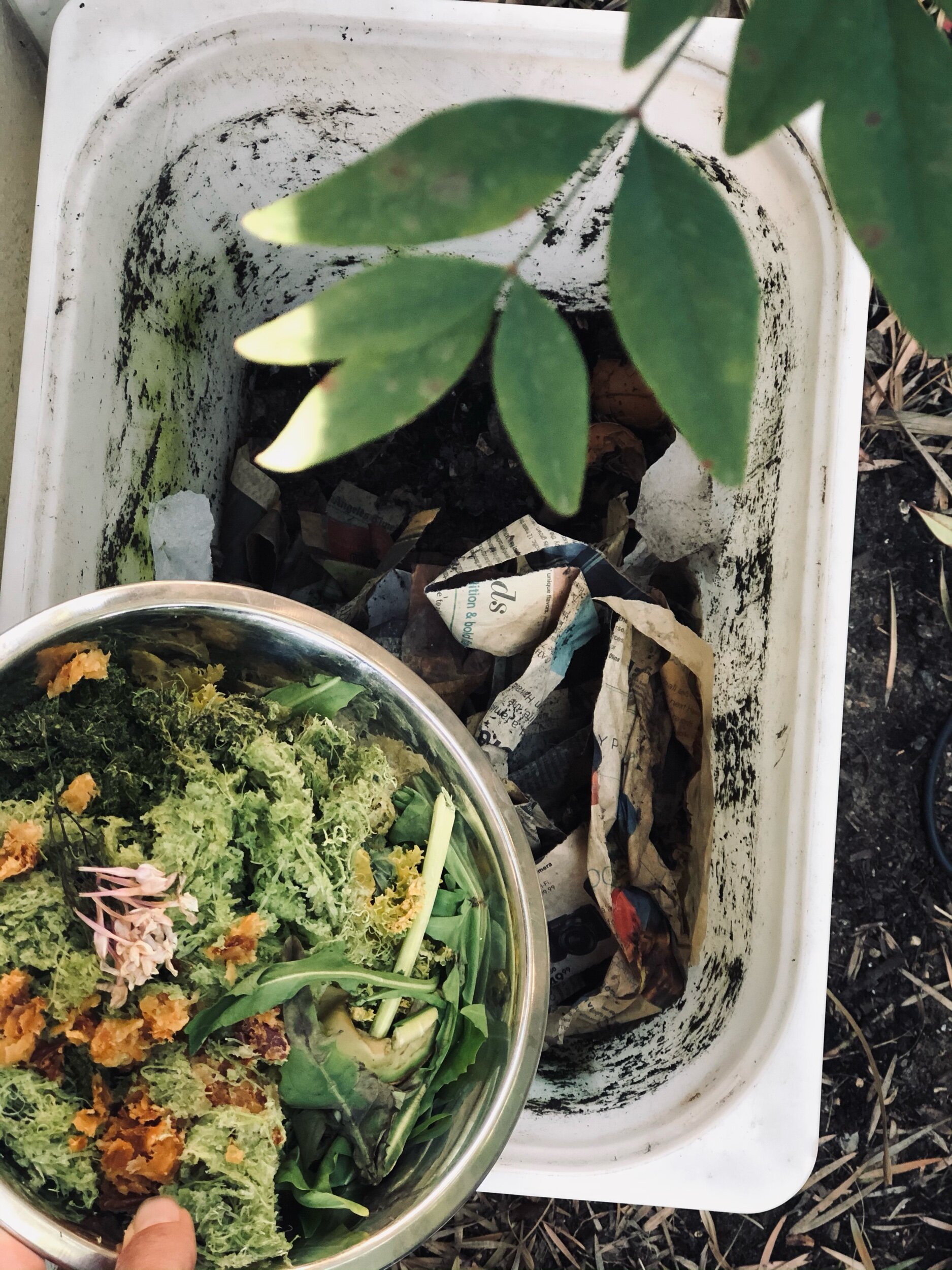Juicers: From waste makers to waste cyclers
From an eco standpoint, I haven’t been the biggest fan of the practice of juicing. While it delivers vitamins and hydration to an individual body, it doesn’t make ecological sense to remove and throw out a large part of each fruit or vegetable including useful fibers that help its metabolism.
If you get your juice at a conventional juice shop, all this homegrown goodness goes straight to the dumpster and the landfill, passing up an amazing chance to become healthy soil for a next generation of nutritious produce. (Kudos to juice shops and homeowners who compost their juice scraps!).
But before you go donating that juicer at the back of your cupboard, here’s how you can put it to good use as a nutrient cycling tool in your kitchen by changing a few simple steps in your juicing routine.
First, forage in your fridge, countertops, and garden beds and harvest any veggies that are in oversupply or on the verge of being too old. This step is one key difference between juicing as a wasteful practice and juicing as a waste cycling practice: Instead of buying all new produce, you’re using your juicer to extract any last bits of food from what might otherwise completely go to waste.
Here’s what we found:
Fridge: three bunches of celery, one already feeling rubbery.
Counter: several citrus fruit that were either too soft or too hard to be inviting as a snack. A few soft and mealy apples.
Garden beds: Parsley going gangbusters, and there’s only so much we can eat on our soups and omelettes.
Next, cut away any yellow, brown or mushy areas. Chop these roughly and put aside in a bowl.
Prep your good stuff for the juicer.
A salad that would make any worm drool: juicer scraps, old produce chopped fine, and even a couple of dried blooms
Step 3: Make and enjoy a delicious juice! Ours was a late winter citrus green juice.
Step 4: Add your juicer scraps to the bowl with your other leftover bits to make a beautiful worm salad.
Step 5: Feed the worms your scraps
Last step: In another post we’ll share how to make a worm bin and harvest the finished castings. For now, I’ll just share that you can complete the circle by using the worm poop as rich fertilizer to sprinkle in your garden beds (or house plants) and nourish that next bumper crop of parsley!





